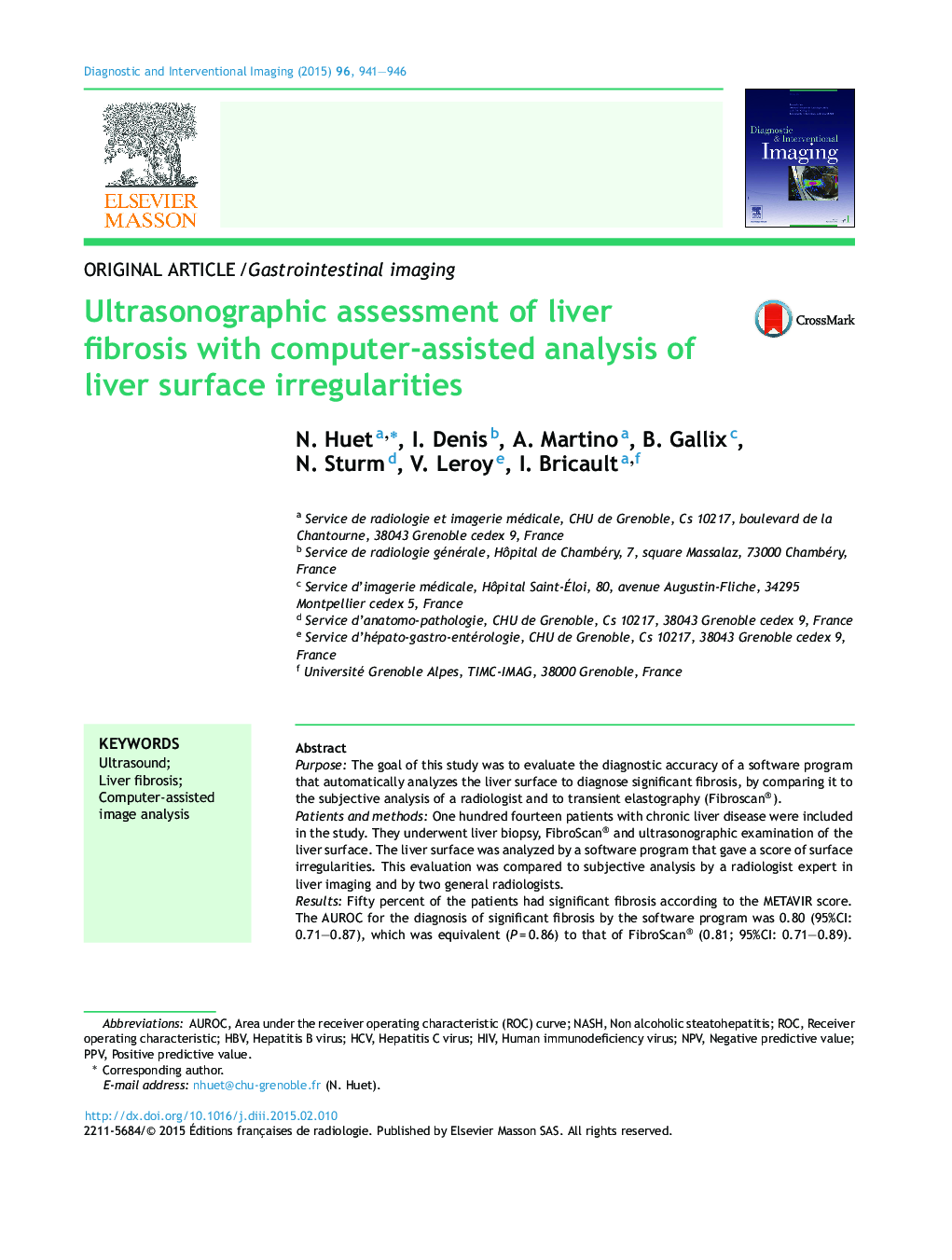| Article ID | Journal | Published Year | Pages | File Type |
|---|---|---|---|---|
| 2737717 | Diagnostic and Interventional Imaging | 2015 | 6 Pages |
PurposeThe goal of this study was to evaluate the diagnostic accuracy of a software program that automatically analyzes the liver surface to diagnose significant fibrosis, by comparing it to the subjective analysis of a radiologist and to transient elastography (Fibroscan®).Patients and methodsOne hundred fourteen patients with chronic liver disease were included in the study. They underwent liver biopsy, FibroScan® and ultrasonographic examination of the liver surface. The liver surface was analyzed by a software program that gave a score of surface irregularities. This evaluation was compared to subjective analysis by a radiologist expert in liver imaging and by two general radiologists.ResultsFifty percent of the patients had significant fibrosis according to the METAVIR score. The AUROC for the diagnosis of significant fibrosis by the software program was 0.80 (95%CI: 0.71–0.87), which was equivalent (P = 0.86) to that of FibroScan® (0.81; 95%CI: 0.71–0.89). Results of the subjective analysis by the expert radiologist were poorer than those of the software analysis (P = 0.02) (AUROC = 0.66; 95%CI: 0.56–0.75). Interobserver agreement among radiologists was poor (0.25 < kappa < 0.37).ConclusionComputer-assisted liver surface analysis was better than subjective analysis, and similar to that of the FibroScan®. This method could be useful for the diagnosis of significant fibrosis in patients with chronic hepatitis and complementary to the other non-invasive diagnostic tests.
